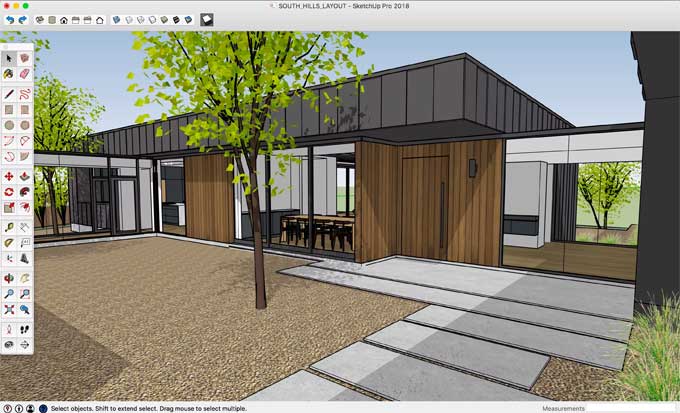How to organize models and classify objects in SketchUp?

Classifying objects in SketchUp
You may add information to components and groups using the SketchUp Classifier to build an object that you can control.
Objects feature a variety of information that you can use to make reports, analyse a model, dimension, count, measure, tag, and export the objects as well.
Before you start classifying the various objects you must be sure to always check the following:
1. Categorize the object as a component before attempting to classify it.
2. Ensure that the template contains the classification system.
3. On the toolbar, enable the Classifier tool.
You are now able to select the component and choose the classifier tool from the drop-down menu. Select the type of object that you wish to categorize by clicking on the arrow next to the classification system. By inputting the necessary information, you will then be able to proceed with the process of classifying the object.
Report generation
By using SketchUp's generate report service, you are able to generate a .csv file that contains a list of all the attributes listed on your SketchUp model.
When it comes to the construction stage, this type of report is particularly useful for getting a glance at how many of each component is going to be required. Planning and calculating the final cost of a project is made easier.
You can create a new template by navigating to File > Generate Report and choosing a new template. Now that you have chosen which components you would like to include in the report, you can customize it. Whenever you are satisfied that you have all the information you need, click on the Run Report button to begin creating the report.
Organizing the Models
By utilizing the array of organization tools at your disposal, you can keep your model tidy at all times. As well as being able to find everything that you need when you need it, it also provides you with the ability to generate reports, which is very useful.
Organizing geometry into groups and components in order to make sense of it. You will be able to work on specific areas of your model individually if you separate smaller sections of your model in this way.
Giving these things a hierarchy makes it simple for you to make a reasonable choice based on what you require. You can select elements that fit within a specific level of the hierarchy while constructing reports. Additionally, this enables you to report on the precise items with the appropriate data.
Changing the component and group visibility. You don't have to always see everything. In order to concentrate your attention on the topic at hand while working on your SketchUp model, it is really always best to have the screen only display pertinent groups and components.
Viewing a model
It is crucial to look at a model from all angles to make sure your design stays on target. You may orbit, zoom, and pan to view your model from different perspectives.
To obtain a broad concept of how your model appears from all angles, you may move about above and below it. Click on the drawing area while using the Orbit tool. The cursor may now be moved to revolve around that region's centre.
When you want to concentrate on a particular component without being distracted by the rest of your model, zooming in will help. And zooming out gives you a quick view of your whole idea, allowing you to include everything in your design. choosing the Zoom tool To zoom in or out, click and drag up or down.
In order to obtain a better understanding of how things are looking from both sides, panning just moves the camera angle to the left or right. Click on Camera > Pan. To pan left or right, click and hold both the left mouse button and the scroll wheel.
All of the perspectives may be turned on and off as desired. You will also discover that this task and modelling in general is much facilitated by the use of a three-button scroll wheel mouse.
Previewing a model in Google Earth
Once you have prepared your model, you can export it as a . KMZ file. Using this format, Google Earth will be able to recognize your data. The map will appear with your model in place when you open the file in Google Earth. View the design in its chosen surroundings by zooming in and moving around.
To learn more, watch the following video tutorial.
Video Source: TheSketchUpEssentials
Saving a model in Google Earth
The default setting for Google Earth is to load it into Temporary Places.
If you wish to refer back to the preview in the future, you may want to save it. Choose Save to MY Places instead of Temporary Places by right-clicking the model name in the Temporary Places folder.



